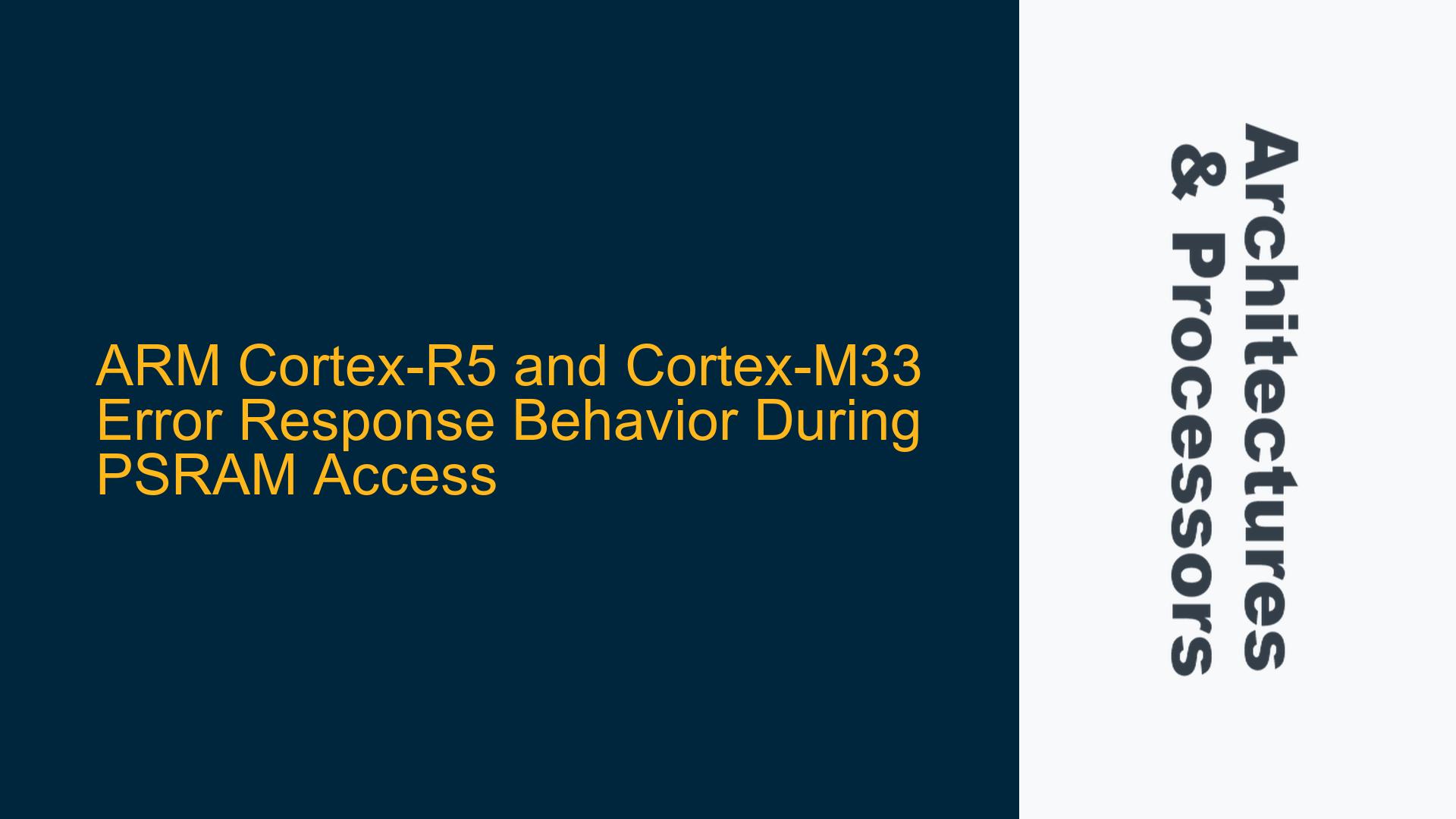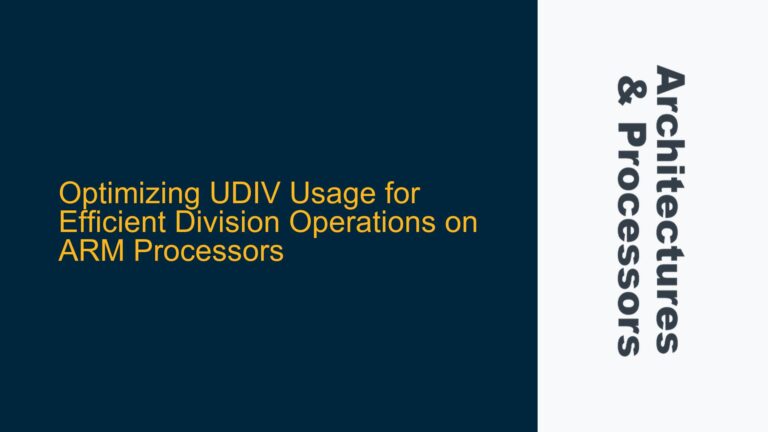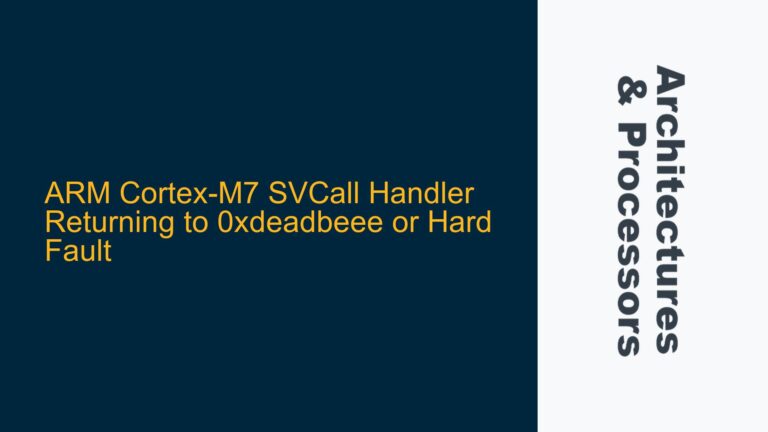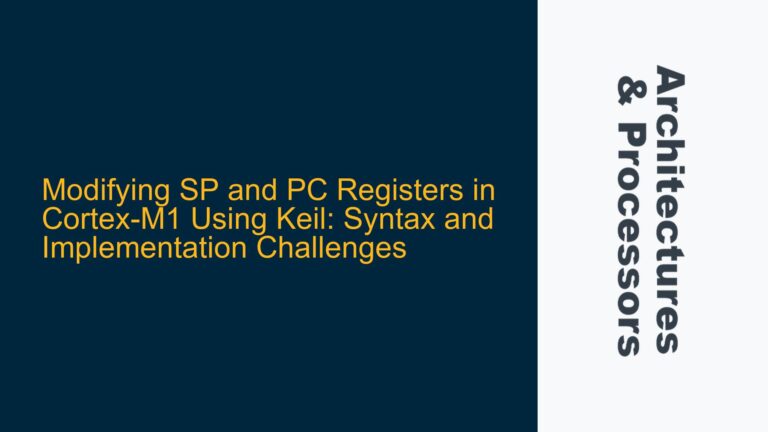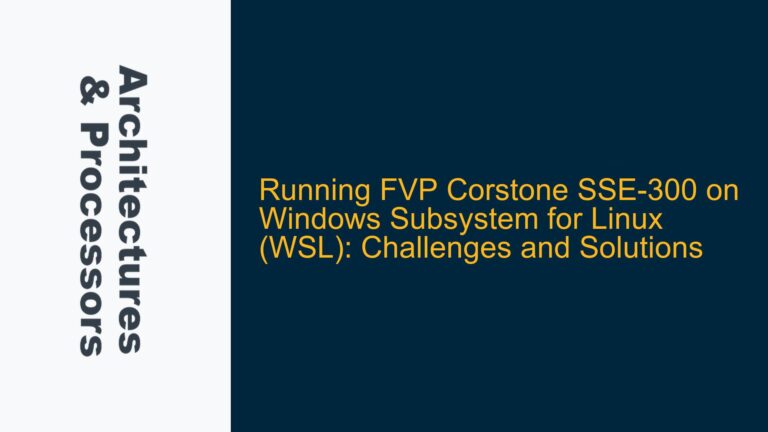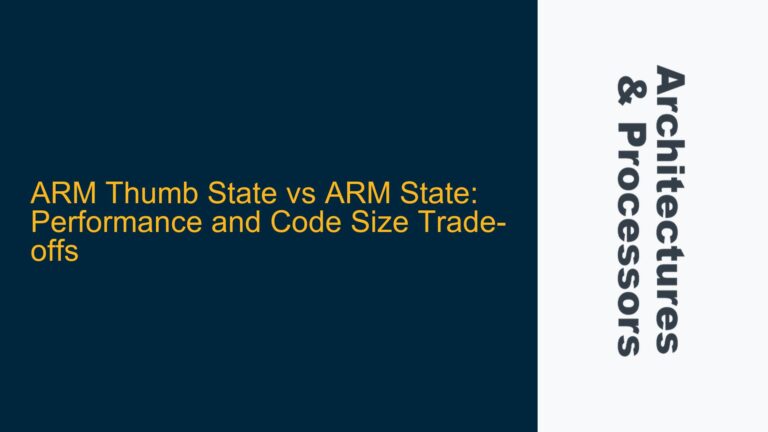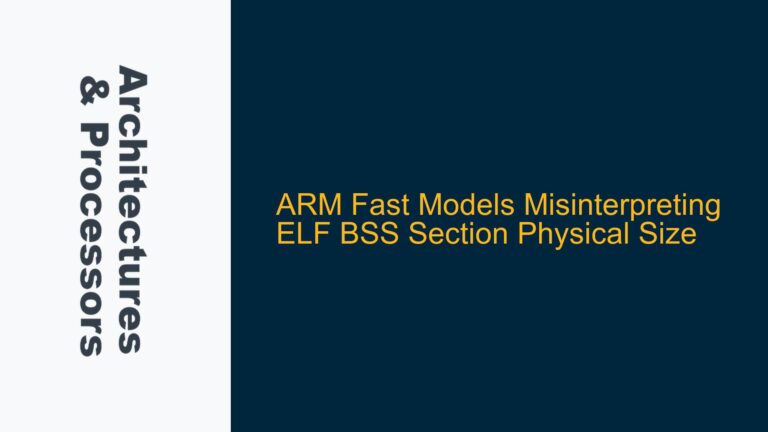ARM Cortex-R5 and Cortex-M33 Exception Handling During Read and Write Errors
The behavior of ARM Cortex-R5 and Cortex-M33 processors when receiving error response signals during memory access operations, particularly with PSRAM, is a critical aspect of system reliability and fault tolerance. In this scenario, the Cortex-R5 and Cortex-M33 exhibit different behaviors when encountering read and write errors. Specifically, the Cortex-R5 and Cortex-M33 enter an exception state when a read operation triggers an error response from the memory controller, but they continue operating normally when a write operation triggers an error response. This discrepancy raises questions about the internal mechanisms of these processors and how they handle error responses during memory access operations.
The memory controller in this system acts as an intermediary between the processors and the PSRAM. It performs access permission checks and returns an error response signal to the processor if an access violation occurs. The error response signal is a critical feedback mechanism that informs the processor about the success or failure of a memory operation. However, the way the Cortex-R5 and Cortex-M33 handle this signal differs between read and write operations, leading to the observed behavior.
Understanding this behavior requires a deep dive into the architectural differences between the Cortex-R5 and Cortex-M33, their exception handling mechanisms, and the specific implementation details of the memory controller. The Cortex-R5 is designed for real-time applications and features a dual-core configuration with support for high-performance computing tasks. It includes advanced error detection and correction mechanisms, making it suitable for safety-critical applications. On the other hand, the Cortex-M33 is optimized for low-power, embedded applications and features a simpler, single-core architecture with a focus on energy efficiency.
The difference in behavior between read and write errors can be attributed to several factors, including the way the processors handle data dependencies, the timing of error detection, and the privilege levels at which the operations are performed. Read operations are typically more critical than write operations because they involve fetching data that may be required for subsequent instructions. If a read operation fails, the processor may not have the necessary data to continue execution, leading to an exception. In contrast, write operations may be less critical because they involve storing data, and the processor may be able to continue execution even if the write operation fails.
Memory Controller Error Types and Processor-Specific Behavior
The memory controller plays a crucial role in determining the type of error response signal that is returned to the processor. The error type can vary depending on the nature of the access violation, such as an invalid address, a permission violation, or a bus error. The Cortex-R5 and Cortex-M33 processors interpret these error types differently, leading to the observed differences in behavior.
When a read operation triggers an error, the memory controller returns an error response signal that indicates the type of error. The Cortex-R5 and Cortex-M33 processors are designed to handle such errors by entering an exception state. This ensures that the system can recover from the error and continue operation. The exception handling mechanism in these processors is triggered by the error response signal, and the processor executes the appropriate exception handler to deal with the error.
In the case of write operations, the memory controller also returns an error response signal if an access violation occurs. However, the Cortex-R5 and Cortex-M33 processors do not enter an exception state in this scenario. Instead, they continue operating normally. This behavior can be attributed to the way the processors handle write operations. Write operations are typically less critical than read operations because they do not involve fetching data that is required for subsequent instructions. As a result, the processors may be designed to tolerate write errors and continue execution without entering an exception state.
The difference in behavior between the Cortex-R5 and Cortex-M33 can also be influenced by the privilege levels at which the operations are performed. The Cortex-R5 and Cortex-M33 support multiple privilege levels, including user mode and privileged mode. Operations performed in privileged mode may have different error handling mechanisms compared to operations performed in user mode. For example, a write operation performed in privileged mode may be allowed to continue even if an error occurs, while a read operation performed in user mode may trigger an exception.
Implementing Robust Error Handling Mechanisms for PSRAM Access
To address the differences in behavior between read and write errors, it is essential to implement robust error handling mechanisms in the system. This involves understanding the specific error types returned by the memory controller and configuring the Cortex-R5 and Cortex-M33 processors to handle these errors appropriately.
One approach is to configure the memory controller to return detailed error information for both read and write operations. This information can be used by the processors to determine the appropriate course of action. For example, if a read operation triggers an error, the processor can use the error information to determine whether to enter an exception state or attempt to recover from the error. Similarly, if a write operation triggers an error, the processor can use the error information to determine whether to continue execution or take corrective action.
Another approach is to implement custom exception handlers for the Cortex-R5 and Cortex-M33 processors. These exception handlers can be designed to handle specific error types and take appropriate action based on the nature of the error. For example, if a read operation triggers an error, the exception handler can attempt to recover from the error by retrying the operation or fetching the data from an alternative source. If a write operation triggers an error, the exception handler can log the error and continue execution without entering an exception state.
In addition to custom exception handlers, it is also important to configure the privilege levels at which the operations are performed. Operations that are critical to system operation should be performed in privileged mode, where they can be monitored and controlled more effectively. Less critical operations can be performed in user mode, where they are less likely to trigger exceptions.
Finally, it is important to thoroughly test the system to ensure that the error handling mechanisms are working as expected. This involves simulating various error scenarios and verifying that the Cortex-R5 and Cortex-M33 processors handle these errors appropriately. By implementing robust error handling mechanisms and thoroughly testing the system, it is possible to ensure reliable operation even in the presence of memory access errors.
In conclusion, the behavior of the ARM Cortex-R5 and Cortex-M33 processors when receiving error response signals during PSRAM access is influenced by several factors, including the type of error, the privilege level at which the operation is performed, and the specific implementation of the memory controller. By understanding these factors and implementing robust error handling mechanisms, it is possible to ensure reliable operation of the system even in the presence of memory access errors.
